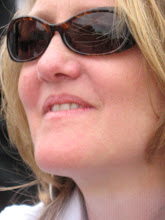
We maneuver the bikes onto the RER-C and hop off at Versailles Rive-Gauche. We turn right out of the station and follow the road to the top of the hill and the double-wide Ave de Paris, which dates back to the reign of Louis XIV. Turning left, you immediately see the sprawling Chateau de Versailles before you; as you get closer, you see as well the rows of tour buses and crowds of tourists queuing up to buy Chateau tickets. But we know better.
We follow the road to the left, then to the right, then to the left again, down a hill, and turn right at the light, all the time circumnavigating the Chateau edifice. We pass between the Orangerie and the Swiss pool; we ride the length of the bosquéts (groves) installed by Le Notre in the late 17th century. When we reach the first grand wrought-iron-and-gilt gate that is open to the public, we cross into the 2,000-acre Versailles Park that extends beyond the splendid palace of the Sun King and his successors.
From here one can ride and ride, looping around the four arms of the Grand Canal to the Grand Trianon to the Petit Trianon and back toward the Chateau again without having to stop at a traffic light or travel the same route twice. At the base of the formal gardens, we lock up our bikes. From here, we choose an area of Le Notre’s creation to explore, preferably one we’ve never seen before: yesterday we wandered the avenues and groves of the south Garden. From the Apollo Fountain, we cut diagonally through the Colonnade Grove and followed the Bacchus and Saturn Avenues with their whimsical fountain sculptures until we reached the Queen’s Grove. There, we learned from a plaque that this grove was not constructed by Le Notre at all, but had been replanted in 1775-76, replacing a “famous Labyrinth depicting 39 Aesop’s fables following an idea by Charles Perrault, the author of Mother Goose stories”.
From the Apollo Fountain, we cut diagonally through the Colonnade Grove and followed the Bacchus and Saturn Avenues with their whimsical fountain sculptures until we reached the Queen’s Grove. There, we learned from a plaque that this grove was not constructed by Le Notre at all, but had been replanted in 1775-76, replacing a “famous Labyrinth depicting 39 Aesop’s fables following an idea by Charles Perrault, the author of Mother Goose stories”.
Did you know Mother Goose was a Frenchman? I didn’t. But it’s true!
In 1697, Charles Perrault published Histoires ou contes du temps passé, avec des moralitiés: Les contes de ma mère l'oie (Stories or Tales from  Time Past, with Morals: The Stories of my Mother the Goose). He did not invent the stories. Cinderella, Little Red Riding Hood, Sleeping Beauty, Puss-in-Boots – these had a long oral tradition, passing from generation to generation among the French common folk. What Perrault did was to elevate his characters from the cottage to the Palace and dress them in fine clothes to give them a new audience, the Versailles Court, while letting the simplicity of the morals speak for themselves. In so doing, he laid down the foundations for a new type of literary genre, one that continues to endure the world over today: it's called, the Fairy Tale.
Time Past, with Morals: The Stories of my Mother the Goose). He did not invent the stories. Cinderella, Little Red Riding Hood, Sleeping Beauty, Puss-in-Boots – these had a long oral tradition, passing from generation to generation among the French common folk. What Perrault did was to elevate his characters from the cottage to the Palace and dress them in fine clothes to give them a new audience, the Versailles Court, while letting the simplicity of the morals speak for themselves. In so doing, he laid down the foundations for a new type of literary genre, one that continues to endure the world over today: it's called, the Fairy Tale.
Sources:
Perrault, Charles. The Complete Fairy Tales of Charles Perrault. With Sally Holmes, Neil Philip, and Nicoletta Simborowski. New York, Clarion Books: 1993.
http://www.chateau-de-versailles.fr/en/
Images:
Map of Versailles in 1789 from William R Shepherd's Historical Atlas.
Illustration from Perrault’s Mother Goose Stories by Gustave Doré (1832-1883), French artist, engraver, illustrator and sculptor.
Charles Perrault, by Philippe Lallemand (1636–1716), French portrait painter.

That is fascinating and no, I didn't know that Mother Goose was a Frenchman.
ReplyDeleteJust what a reader wants... SO great, thanks for the trip to Versailles, we lived there for a month in a little hotel, I spent my days in the grounds, reading, eating my bread and cheese... loving every moment.
ReplyDeleteAnd no, I did not know Mother Goose was a Frenchman!
Patsy
Sacre bleue! Who knew?
ReplyDeleteThe Dore illustration is great.